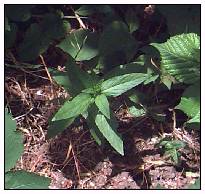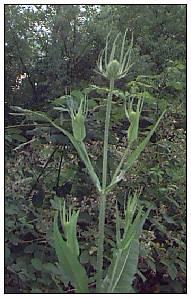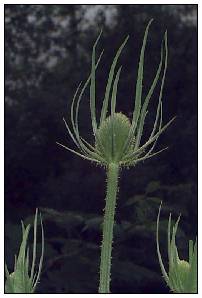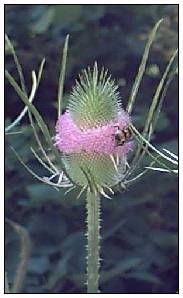 Medford Station 13: Where There's Water, There's Life
Medford Station 13: Where There's Water, There's Life
THIS IS JUST AN ORDINARY DITCH, teeming with life. The tiny green plants that sometimes cover the water are duckweek (Lemna sp.). A true flowering plant, its closest relative in the Northwest is the skunk cabbage. It has neither definite leaves nor definite stems; each little segment has its own root.
The plant with the simple lance-shaped leaf growing in the ditch is dock (Rumex sp.). Its stout taproot makes this European invader difficult to dislodge once it is established. It is closely related to sorrel, a piquant herb often added to soups. Around the bend, and a few yards ahead on the right, are some teasel plants (Dipsacus sp.). The name teasel derives from the fact that it was introduced from Europe for teasing carding wool. It is a biennial, which means it has a two-year growing cycle, flowering and dying back in the second year. It is now widespread in moist distrubed places throughout the United States. The basal leaves are often fused, allowing it to collect water. The scientific name, dipsacus, means thirsty. The dry spiny flower stalks are used as decorations.





















